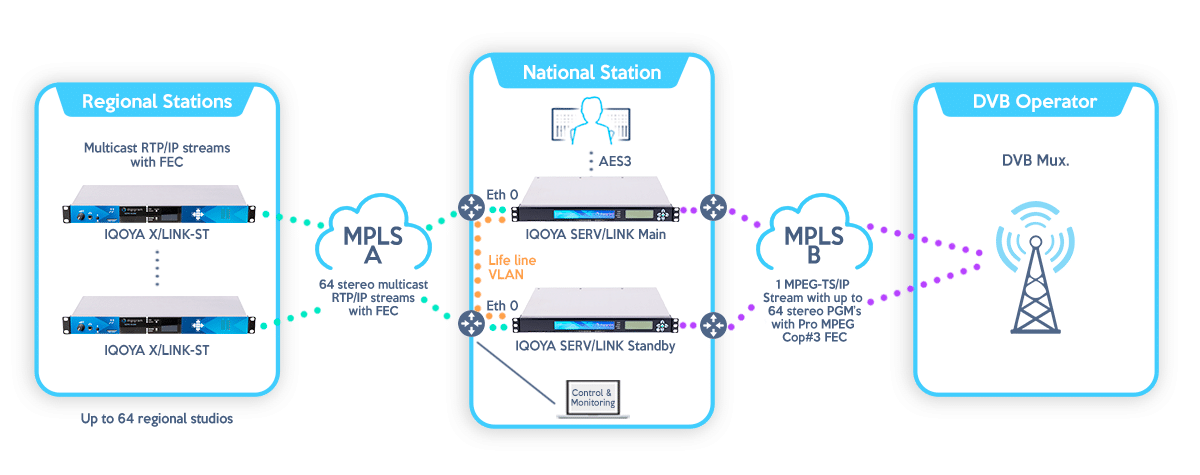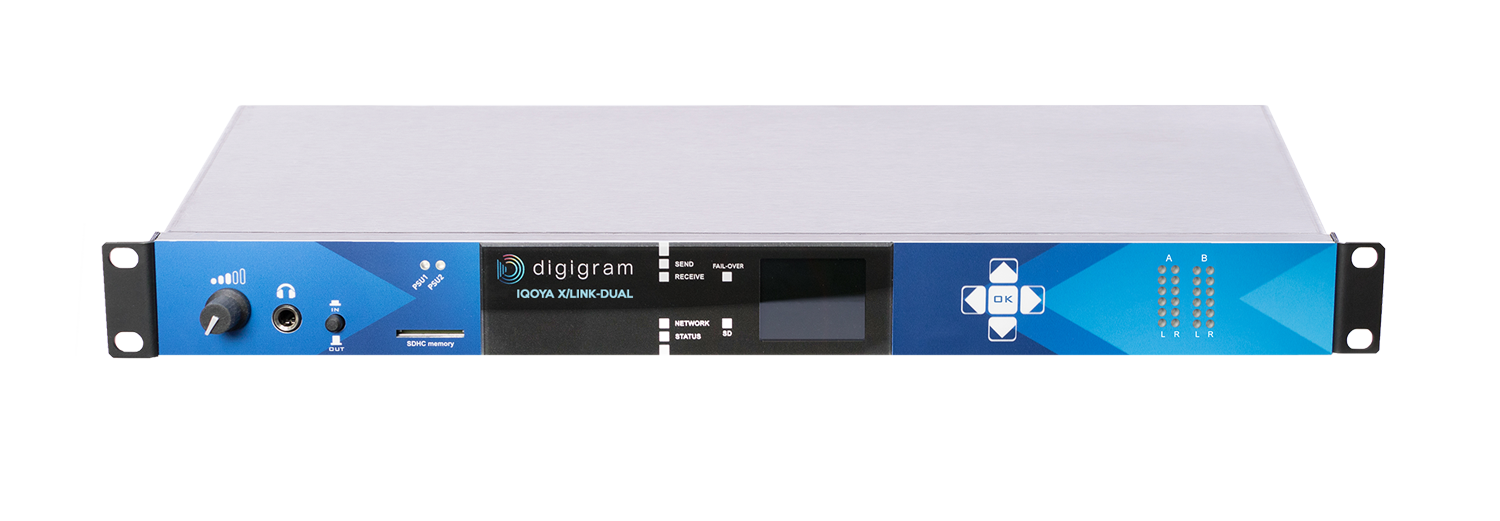A large, popular radio station, perhaps your favorite! This top of the bill house name is famous for its one of a kind of programs, blending acute local news with national headlines. To achieve such a thorough coverage, the media has spreaded with about 50 regional stations scattered over the country, all connected to a HQ, mothershiplike national station. A formidable network to report on regional, local and national events. Of course, transmitter sites dispatched across the country broadcast a mix of local and national content.
For obvious consistency reasons, the making of programs intended for local broadcasts are centrally stirred at the national HQ, then sent to local FM transmitter sites for local distribution. So, what is the tech magic behind the curtain?
The solution

The global system to achieve these back and forth movements between national and regional is ridiculously simple. It counts an IQOYA SERV/LINK placed at the radio national HQ and a network of IQOYA X/LINK-ST, one installed at each regional station. This is it.
Each local IQOYA X/LINK-ST streams its own live local program to the national station through an MPLS network.
Back at the HQ, an IQOYA SERV/LINK collects all the regional streams, plus the national program in AES3 (or analog, AES67, Dante, or MADI, you choose).
IQOYA SERV/LINK has the national program configured as a backup for regional, in case the regional stream is lost. The audience will receive a broadcast anyhow –
IQOYA SERV/LINK wisely switches between national and regional contents to generate the blend of regional intended contents, thanks to a SNMP based NMS. The regional mix is encoded and multiplexed in an MPEG-TS MPTS IP stream, and eventually sent over the MPLS to a DVB multiplexer.
To take absolutely no chance with the streams traffic between local/regional and national, a second IQOYA SERV/LINK is stored at the national radio. Paired with the first one in a “High Availability” cluster (1+1 hot redundancy), it guarantees a secure MPEG-TS stream generation.
Back on the field, each transmitter site has a satellite receiver configured to extract the appropriate program from the multiplex. And there you are, listening to that broadcast you’ve been waiting for!
Shopping list:
At each regional studio
– IQOYA X/LINK-ST (analog or AES3 connectivity), or IQOYA X/LINK-AES67 (AES67 connectivity)
At the radio HQ, national coverage
Two IQOYA SERV/LINK AES3 with:
- Transcoding software option for the support of 50 stereo streams
High Availability option (1+1 hot redundancy)
Benefits of the solution
- Space thrift: only a 2U space is required at the national station to generate the program’s multiplex with a 1+1 hot redundancy.
- Security inside: Integrated backup for each regional program
- Easy integration into an SNMP based NMS, for the monitoring and control of the audio source to be included to each final regional program.
- Scalable solution: possibility to increase the number of regional stations.
- SERV/LINK supports up to 64 incoming stereo streams to be transcoded to MPEG-TS/IP.
Learn more
X/LINK-ST product page

X/LINK-AES67 product page

SERV/LINK product page





